Serratus anterior pain: Cause, Symptoms, Treatment, Exercise
In Serratus anterior pain you will feel the pain in the arm & flexion movement of the shoulder above 90, this is produced by the Serratus anterior muscle. The most common causes of this serratus anterior muscle pain are tension, stress & overuse. It is common in sports with repetitive motions like swimming, tennis/weightlifting.
- Serratus anterior is also commonly called the boxer’s muscle.
- The serratus anterior muscle spans the upper eight/nine ribs.
- This muscle helps to rotate/move the scapula forward &up.
- Sometimes it is referred to as the boxer’s muscle which is responsible for the movement of the scapula bone when a person throws a punch.
- Patient feel the Serratus anterior pain caused by several medical conditions & lifestyle factors.
- It is due to the overuse, the strain of the serratus anterior pain.
- The patient feels difficulty with deep breathing & also affects the sensation of the Serratus Anterior muscle.
- In the starting phase applied to the RICE principle the reduce the pain.
- The patient is also taking the medication for the release of the pain.
Table of Contents
What is the Anatomy of the Serratus Anterior muscle?
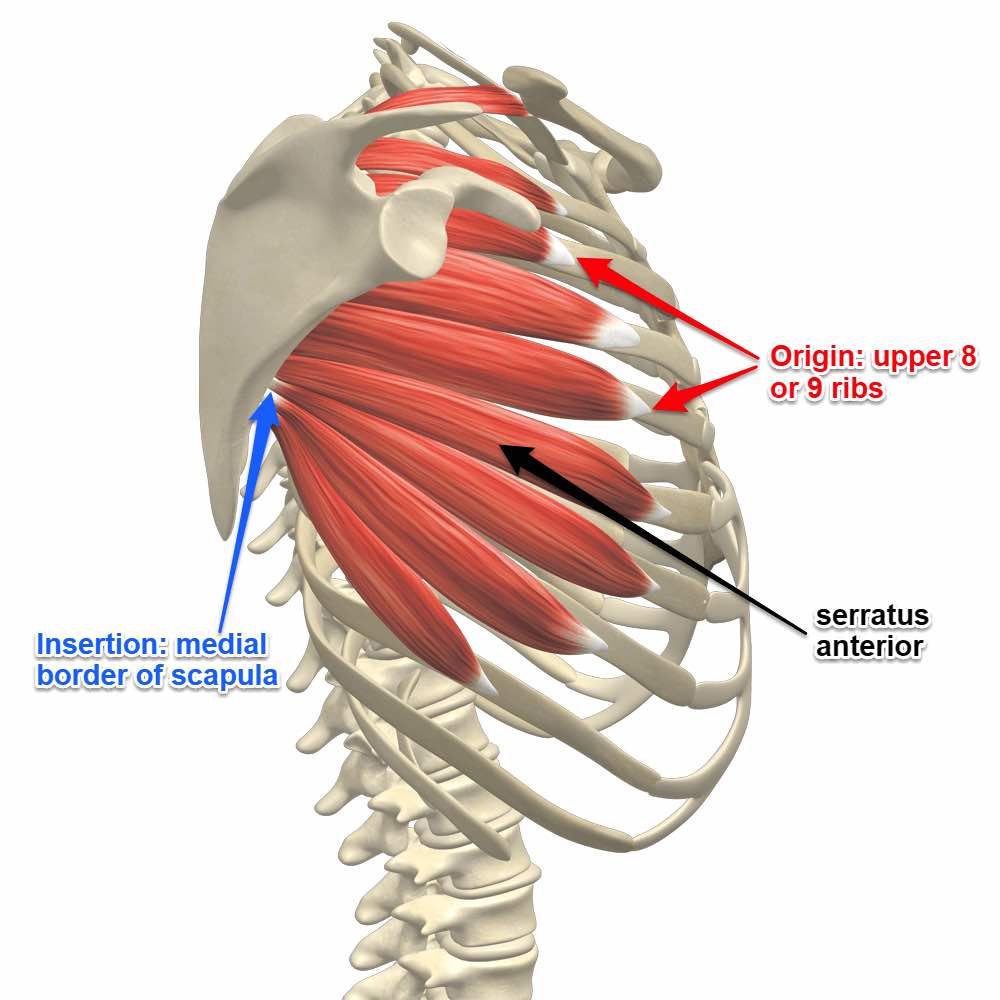
- The serratus anterior muscle originates from the eight muscular slips which are attached to the side of the ribs.
- Then it is courses around the side of the rib cage & underneath the scapula bone.
- Then this muscle is inserted along the medial border of the scapula bone.
- This Serratus Anterior muscle lies between the back of the rib cage & shoulder blade near the subscapularis muscle = which is one of the four rotator cuff muscles.
- A small fluid-filled sac, it is known as the bursa which is lies between the subscapularis muscle & serratus anterior muscle so that it allows the scapula bone to glide & slide normally during the movement.
- This serratus anterior muscle is a fan-shaped muscle that lies at the lateral wall of the thorax.
- The main part of this muscle lies deep under the scapula bone & the pectoral muscles.
- This muscle is easy to palpate between the pectoralis major muscle & latissimus dorsi muscles.
- In athletic bodies, the muscle is even visible to the naked eye along with the ribs which are lie underneath the axilla.
- This serratus anterior muscle originates from the 1st to 8th/9th ribs & inserts at the anterior surface of the scapula bone.
- Due to its course for the serrated & saw-toothed appearance.
What are the causes of the serratus anterior pain?
- The most common causes of the serratus anterior muscle pain include:
- Minor injuries of the serratus anterior muscle
- Overuse of the serratus anterior muscle
- Strain in the serratus anterior muscle
- Creat the tension in the serratus anterior muscle
- This muscle pain is common in sports activities with repetitive motions, like swimming, tennis & weightlifting mostly with heavyweights.
- This serratus anterior muscle pain also results from the serratus anterior myofascial pain syndrome = SAMPS.
- SAMPS serratus anterior myofascial pain syndrome is difficult to diagnose & it is often done so by exclusion — means the doctor is ruled out other sources of the pain.
- It is manifested as chest pain but it is also caused to arm/hand pain.
- It is a rare myofascial pain syndrome.
- Some Various medical conditions which are also lead to serratus anterior muscle pain/symptoms similar to it:
- In this condition include to:
- Slipped/broken rib
- Pleurisy means inflammation/infection of the lung & chest tissues.
- Ankylosing spondylitis is a type of arthritis that affects the spine
- Asthma
What are the symptoms of serratus anterior muscle pain?
- Issues with the serratus anterior muscle are most often the result in pain in the chest, back/arm.
- These issues also make it difficult to lift the arms overhead & have a normal range of motion with the arm & shoulder joint.
- Other symptoms which are included in the serratus anterior muscle pain:
- The patient feels the arm& finger pain.
- Difficulty in deep breathing.
- The patient feels the sensitivity in the arm.
- The patient feels the tightness in the serratus anterior muscle.
- The patient also feels pain in the chest/breasts.
- The patient also feels the shoulder blade pain.
When does the patient need to contact a doctor for the serratus anterior pain?
- Most of the muscle pain does not need a doctor’s visit.
- But if the patient feels the same symptoms & call the doctor immediately:
- Dizziness
- High fever with a stiff neck
- A tick bite/bull’s-eye rash
- Difficulty in the breathing
- Patient feel the muscle pain after starting a new medication & increasing the dosage of an existing medication
- The patient is also feeling worsening pain in the back/chest that doesn’t improve with rest.
- Patient feel the pain which interferes with the sleep & daily activities
- If the patient feels the pain is severe, that doctor is ordered to imaging tests like as an MRI scan/X-ray for the serratus anterior muscle pain.
How is the serratus anterior muscle pain treated?

- In the starting phase of the muscle pain used to RICE principle to reduce the muscle pain.
- R – Rest = Take rest from the daily activities & try to rest of the muscle as much as possible, Rest is most important for the body which allows the muscles for to work in the efficiently for the reducing the risk of wear& tear.
- I – Ice = Apply to towel-wrapped ice for the part of the area of pain for 20 minutes at a time & several times a day.
- C – Compression = apply compression on the muscle it is difficult to apply compression on the serratus anterior muscle. so try to wear a tighter shirt & wrap the area with bandages the help reduce the swelling.
- E – Elevation. but it does not apply to the serratus anterior muscle.
- Sometimes the patient is also used to nonsteroidal anti-inflammatory drugs = NSAIDs such as aspirin = Bufferin / ibuprofen is help to reduce the swelling & decrease pain.
- The patient is also used warm compresses & massages to loosen the serratus anterior muscles & do some exercises.
- The doctor is give to some advice :
- Stronger pain medication
- Joint injections
- Muscle relaxers
- Oral steroids
What is physiotherapy treatment for the serratus anterior muscle pain?
Goal of Physiotherapy treatment are reduce muscle pain, spasm with the help of Electrotherapy treatment while Exercise are prescribed to strengthen the weak muscles and stretching exercise to reduce muscle tightness.
Physiotherapy treatment are:
- Electrotherapy treatment
- Exercise
Electrotherapy:
Electrotherapy treatment are:
- TENS & IFT helps to reduce the pain.
- Ultrasound (US)- reduce the swelling & tenderness.
- To relieve pain and muscle spasm – SWD is useful.
Exercise:
Serratus anterior stretch and strength exercise in a pain free mode helps to resolve your pain permanently, few best exercise are:
- Ab Rollout
- High Bear Crawl
- Scapular Push-Up
- Unilateral Band Chest Press
- Dumbbell Pullover
- Scapular Plane Lateral Raises
- Dumbbell Rotational Punches
- Wall Slides – Serratus Anterior Activation
- Doorway Stretch
- Crescent Side Bend
- Arm Stretch
Ab Rollout:
- This exercise is done with either grip with a barbell loaded with the plates/ an exercise ball, an ab wheel which is used to extend the torso with towards the ground.
- The patient is on the knees & grips the equipment of choice with the hands shoulder-width apart.
- Extend the hips joint towards the floor & let the chest sink forward toward the ground without overarching the lower back.
- The longer range of motion = ROM, the harder the exercise, so that shorten the ROM if new to the exercise.
- Squeeze the lat muscles & pull the back into the starting position.
High Bear Crawl:
- This exercise is a great way to warm up for any workout.
- This exercise strengthens & increase the endurance in the arms, shoulders & chest
- This exercise is Start with on all fours with the knees & arms straight while keeping the eyes up & spine in neutral.
- Move the one hand & the opposite foot forward an equal distance while keeping the back straight & repeat this exercise with the opposite side in a continuous fashion, alternating sides for every rep.
Scapular Push-Up:
- This is a push-up variation, which has performed the move by only moving the shoulder blades.
- Because the shoulder blades primarily activate the serratus anterior muscle, this is about as close as to getting to an isolation move for the muscle.
- At the top of the movement, the patient is pushed further into the ground while keeping the arm straight while rounding the upper back.
- This exercise will fully activate the serratus anterior muscle.
- Get on the hand & knees, placing the hands slightly wider than the shoulder width.
- Straighten the arms & legs so the toes, hands engage the glutes to support a neutral spine.
- Keeping the arms straight, squeeze the shoulder blades together so that chest sinks toward the floor.
- Once the chest can not travel any farther, spread the shoulder blades apart to rise back up.
Unilateral Band Chest Press:
- First of all Engages the serratus anterior muscle more than some other pressing variations, as able to reach forward more fully.
- It helps to strengthen the pressing imbalances between sides.
- Then Trains the anti-rotational muscles of the internal & external obliques as they fight to keep the torso straight during the exercise.
- Anchor a resistance band just below shoulder height, grab it with the right hand & walk forward till have tension.
- Step forward with one leg to assume a staggered stance.
- Press the band till they reach lockout, then reach forward & pause.
- After that Slowly return to the starting position & repeat this exercise.
Dumbbell Pullover:
- The patient is Lay face up on the flat bench, with the feet is firmly planted on the ground.
- Maintain a slight arch in the lower back.
- Either bridge up to engage the chest more/keep the glutes down & chest up to engage the lats more.
- Then Slightly bend the elbows joint & press the weight over the chest.
- Lower the arms back, maintaining a slight bend in the elbows joint.
- Keep lowering the weight till feel a stretch in the chest muscles & lats.
- Then pull the dumbbell over the chest, pause & slowly lower back to the starting position & repeat.
Scapular Plane Lateral Raises:
- The patient is Holding a pair of light dumbbells with the palms facing each other & the dumbbells are resting on the side of the hips joint.
- Then Raise the dumbbells at shoulder height with the slight bend in the elbow joint & pause.
- Slowly return to the starting position of the exercise & repeat this exercise 2 -3 times.
Dumbbell Rotational Punches:
- The patient is in the Standing position.
- The patient is holding a light pair of dumbbells in each hand with the palms facing each other with the elbow joint bent at 90 degrees.
- Pivot with the feet & rotate at the hip joint, not to lower back & throw a punch with the one arm by extending the elbow joint fully.
- Then do the pivot back, bringing the extended arm back into the side, & repeat this exercise with the other arm.
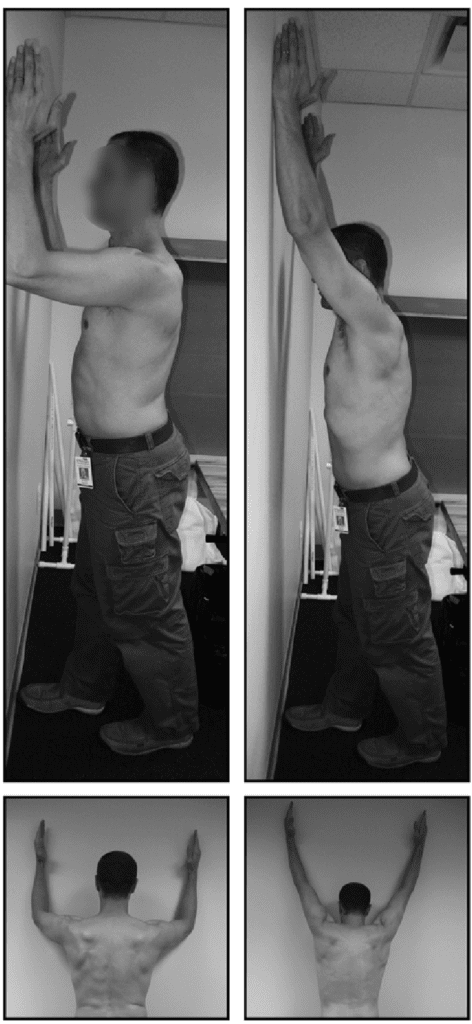
Wall Slides – Serratus Anterior Activation:
- This wall slide exercise when done correctly is a great way to activate the serratus anterior muscle.
- The patient is in a Standing position upright with the back against a wall & the feet are shoulder-width apart.
- Bring the arms up, pressing the shoulder blades into the wall.
- The backs of the hands will be against the wall with the thumbs at about the height of the head.
- The line of the upper arm, from the elbow to shoulder, is perpendicular to the floor.
- Then Inhale by to patient.
- Slowly bend the knee joint & slide the back down the wall till the knees are bent at a 45-degree angle.
- As the bend, the knees joint, straighten the elbows joint till the arms are extended straight up over the head, but still against the wall.
- Hold this exercise position for 5 seconds.
- Then Exhale as they straighten the knees to slide back up the wall till fully upright with knees straight & elbows joint bent back to their starting position.
- Repeat this exercise for the 5 reps.
- The patient is Stand up tall with a straight spine.
- Extend the arms toward the ceiling & place the palms together.
- Slide the shoulder joint blades down the back then lower the shoulders away from the ears.
- Press the hip joint out to the left as the curl torso laterally to the right.
- like as Imagine that patient is trying to make a large “C” shape with the spine.
- Hold this stretching position for 20 seconds, then repeat this exercise on the opposite side.
Doorway Stretch:

- The patient is Stand in a doorway/close to a wall.
- Straighten the spine & stand up tall.
- Place the right hand on the door frame /wall at shoulder height. Position the fingers pointing toward the sky.
- Draw the right shoulder blade closer to the spine.
- Keep the right palm planted firmly &turn the body counterclockwise, toward the left, till the torso is facing forward & the right arm is behind.
- Hold the stretching position for 20 seconds, then repeat this exercise on the opposite side.
Crescent Side Bend:
- The patient is Stand up tall with a straight spine.
- Extend the arms toward the ceiling & place the palms together.
- Slide the shoulder joint blades down the back then lower the shoulders away from the ears.
- Press the hip joint out to the left as the curl torso laterally to the right.
- Like as Imagine that patient is trying to make a large “C” shape with the spine.
- Hold this stretching position for 20 seconds, then repeat this exercise on the opposite side.
Arm Stretch:
- The patient is Stand up tall with a straight spine.
- Place the right arm behind the back with the right elbow slightly bent.
- Reach behind the back with the left hand & grab hold of the right wrist.
- Pull the right wrist joint gently toward the left hip joint.
- For the deepen the stretch, lower the left ear toward the left shoulder joint.
- Hold the stretching position for 20 seconds, then repeat this exercise on the opposite side.
What is the outlook for serratus anterior pain?
- Serratus anterior muscle pain is uncomfortable for the patient, but it is typically resolved on its own without significant treatment.
- Remember the stretching before& after activities which is helpful to reduce the risk of injury mostly with the muscles pain.
- when the patient is experiencing the serratus anterior pain & does not resolve in several days, please call the doctor.

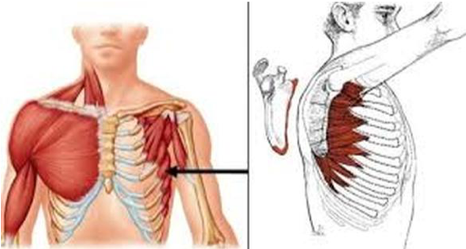
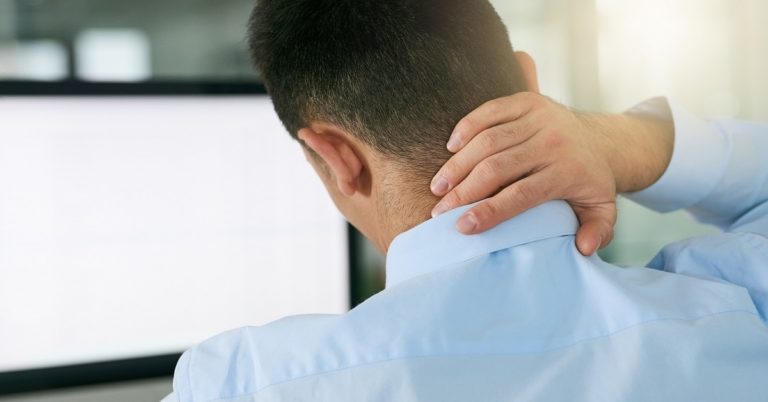
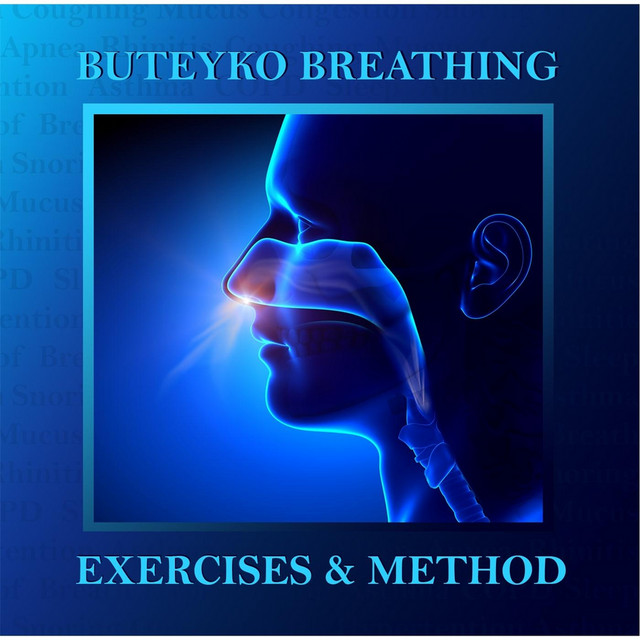
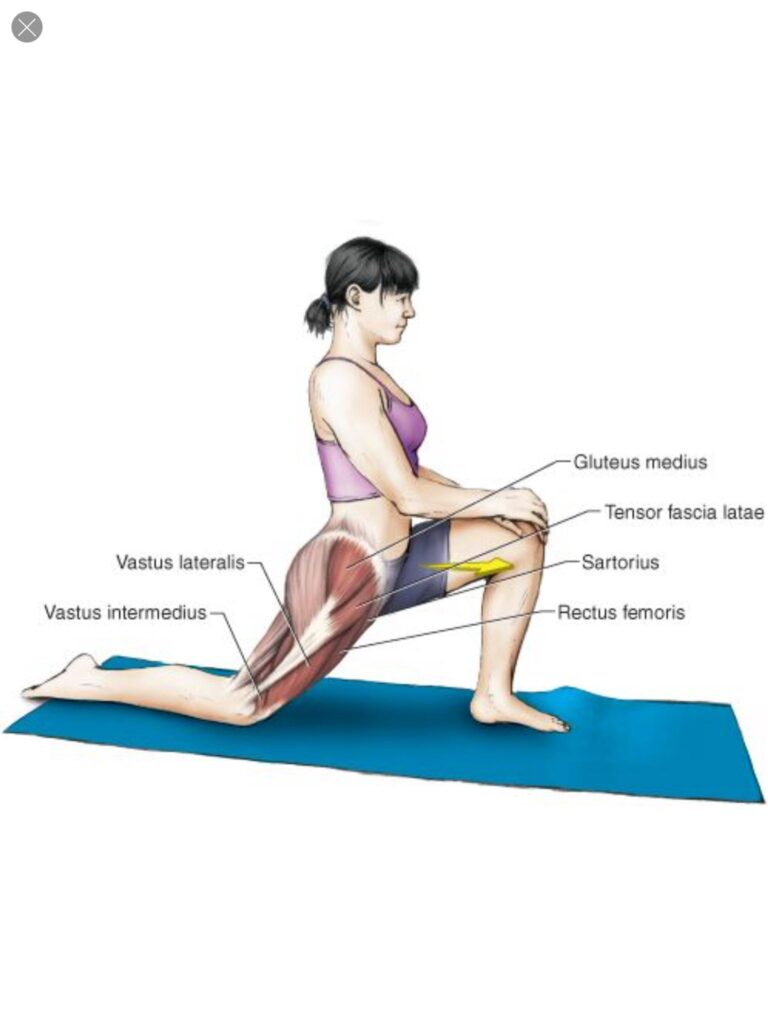
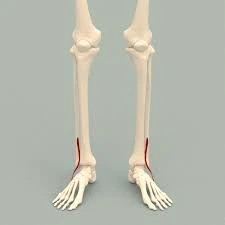
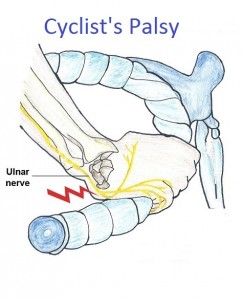
One Comment